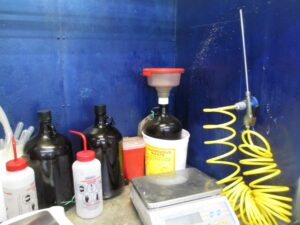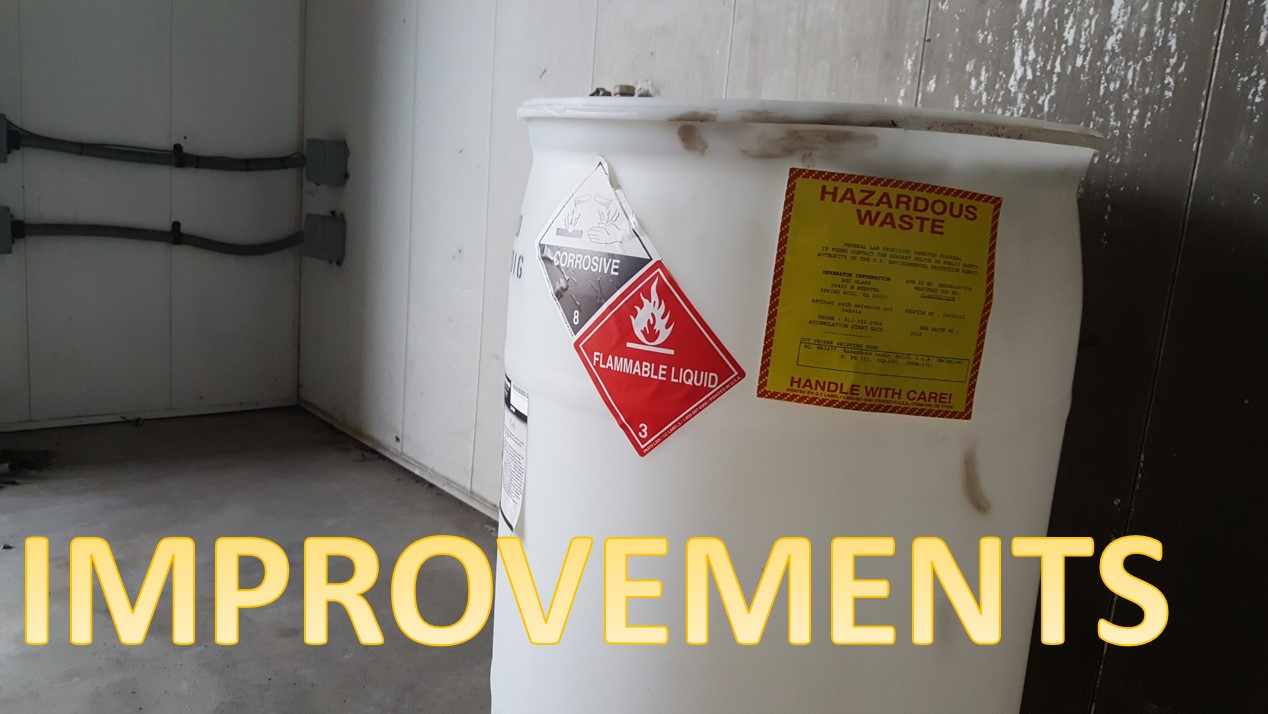The option to manage hazardous waste in a satellite accumulation area (SAA) in addition to or instead of a central accumulation area (CAA) is available to both the large quantity generator of hazardous waste (LQG) and small quantity generator of hazardous waste (SQG). When accumulated in a SAA hazardous waste containers are subject to less regulation than when accumulated in a CAA.
Not sure of your hazardous waste generator category? |
The Generator Improvements Rule made some changes to the regulations for the accumulation of hazardous waste in a satellite accumulation area.
- Moved them from their former location at 40 CFR 262.34(c) to 40 CFR 262.15. Reorganization of Federal Regulations According to the New Generator Improvements Rule
- Made several revisions to the regulations for accumulation and management of hazardous waste in a SAA.
The purpose of this article is to provide one source for the series of articles I will write identifying and explaining the changes made by the Generator Improvements Rule to the regulations for the accumulation of hazardous waste in a satellite accumulation area (SAA).
Before we begin…
The changes:
The U.S. Environmental Protection Agency (USEPA) proposed six changes to the regulations for SAAs. In addition to these six proposed regulatory changes, USEPA discussed two additional issues in the preamble to the proposed rule. In the end, USEPA finalized the six proposed changes with three additional minor changes for a total of nine regulatory changes. It also took non-regulatory actions based on the two issues addressed in the preamble.
The nine changes to the satellite accumulation area regulations by the Generator Improvements Rule are:
- Compliance with special requirements for incompatible wastes.
- Limited exceptions to closed container requirements.
- Clarify “three days” for removal of excess waste from SAA.
- Allow for volume or weight limit for acute hazardous waste.
- Clarify regulations when maximum volume (or weight) is exceeded.
- Containers must indicate the hazards of the contents.
- Applicability of preparedness, prevention, and emergency procedures.
- “Immediately” added to regulations for transfer of leaking containers.
- Clarify the SAA is an option for compliance for both LQG and SQG.
The two non-regulatory actions pertaining to SAAs are:
- Rescind the January 13, 1988 memo that allowed a storage shed outside of a building where a reactive hazardous waste is initially generated to be considered a SAA.
- Provide examples to help generators better understand the term “under the control of the operator”.
If you like this article, please share it using any of the social media platforms identified at the bottom of this article. |
Conclusion:
If you use SAAs for the on-site accumulation of hazardous waste, your Hazardous Waste Personnel Training must include them. Otherwise, you run the risk of a violation of Federal or State regulations. Contact me for the training you are required to provide to Hazardous Waste Personnel regardless of your generator category.
Daniels Training Services, Inc. 815.821.1550 |

